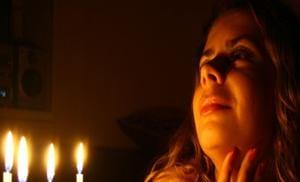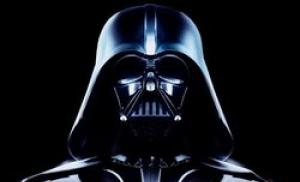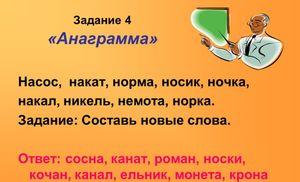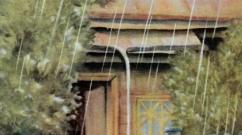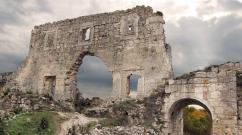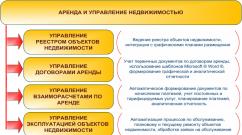Where is Vysotsky buried? Monument to Vysotsky in different countries When Vysotsky died
There are losses that are impossible to come to terms with. In some cases, decades pass, in others - even centuries, but time does not heal this melancholy... Remembrance Day comes, July 25, and the damned question circles again and again: why did this happen so early?
Monument at the grave of Vladimir Vysotsky by sculptor Alexander Iulianovich Rukavishnikov. Opened on October 12, 1985.


A memorial plaque on the house on Malaya Gruzinskaya Street, where Vladimir Vysotsky lived.

Samara. On January 25, 2008, a monument to V. S. Vysotsky was unveiled (sculptor - Mikhail Shemyakin)

Voronezh, Karl Marx Street, 59, near the Institute of Physical Education. Installed on August 21, 2009, grand opening on September 9, 2009. Sculptor Maxim Dikunov.

Samara, Vysotsky square. Memorial stele (authors: chief artist of Samara A. Temnikov and sculptor I. Melnikov)

Monument to Vladimir Vysotsky and Marina Vladi (Ekaterinburg).

Monument to Vysotsky Naberezhnye Chelny.

Monument in Novosibirsk near the Globus Theater (former Youth Theater).
In 1989, a memorial plaque to V. Vysotsky was unveiled at the Odessa Film Studio. Work by S.D. Golovanov, and its plaster copy could be seen in one of the St. Petersburg courtyards on the Obvodny Canal embankment, in the section between Moskovsky and Izmailovsky Avenues, and it was later dismantled due to its poor condition.

Odessa.

Odessa.

Saint Petersburg.
In 1984, in the new part of Volgodonsk, in the Mashinostroiteley park, an unusual monument appeared. The author Vasily Polyakov dedicated it to the legendary poet and singer Vladimir Vysotsky and his beloved Marina Vladi. In those years, the idea of installing a monument to Vysotsky was not yet officially welcomed, so the name “Love” was chosen for the sculpture.




Memorial stone to Vysotsky in Dombai glade. (125 kilometers from Cherkessk).
The sculptor is unknown, but a memorial stone to Vladimir Vysotsky was installed in front of one of the hotels. The monument was opened in March 1993. On the stone itself there is an inscription from Vysotsky’s song “So leave unnecessary disputes! I have already proven everything to myself - the only thing better than mountains can be mountains that no one has ever been to.” This is a slightly modified version, Vladimir Vysotsky had it like this: “... only mountains that I have never been to.” But such a small correction is quite acceptable, because... In this mountain village, remote from civilization, love and respect for the work of Vladimir Vysotsky continues to be preserved.



Vyezhy Log, Krasnoyarsk Territory, where the filming of the film “Master of the Taiga” took place in 1967. In 1996, a memorial sign was erected.

Monument to Vysotsky Moscow, st. Krasnaya Presnya.

Bust of Vysotsky in front of the main building of the Barnaul State University pedagogical university(Molodezhnaya Street, 55), sculptor - N. Zvonkov - (opened: September 14, 2002)

Monument to Vladimir Vysotsky on Strastnoy Boulevard in Moscow.

Monument to Vladimir Vysotsky in the Bulgarian city of Varshets.

Monument to V. Vysotsky in the Central Park of Kaliningrad near the Singing Field.

Mariupol, Ukraine. In 1998, a monument to Vysotsky by E. Kharabet was erected. However, at the beginning of 2003 it was dismantled and on February 7, another monument to Vysotsky, the work of I. Zhigulin, was erected in the same place. Subsequently, the monument by E. Kharabet was re-installed on Leninsky Komsomol Square.

Monument in Mariupol in the image of Gleb Zheglov from the film “The meeting place cannot be changed.”

Monument in Podgorica - the capital of Montenegro.

Monument to Vysotsky in Dubna

Benevskoye (village), Lazovsky district, Primorsky Krai. The monument was erected with the money of pensioner I. Lychko.

Kyiv, monument to Zheglov and Sharapov (opposite the Ministry of Internal Affairs building)

Melitopol, Ukraine, Zaporozhye region.

Moscow, in the courtyard of the Taganka Theater, on January 25, 1988, a bronze monument by the Moscow sculptor G. Raspopov was unveiled.
The bride will weep honestly for me,
The guys will pay off their debts for me,
Others will sing all the songs for me,
And perhaps my enemies will drink to me.
They don't give me any more interesting books,
And my guitar has no strings.
And I can’t go higher, and I can’t go lower,
And I can’t have the sun, and I can’t have the moon.
I can’t be free - I have no right,
You can only go from door to wall.
I can't go left, I can't go right -
You can only have a piece of the sky, you can only have dreams.
Dreams about how I will go out, how my castle will be removed,
How will my guitar be given away?
Who will meet me there, how will they hug me?
And what songs will they sing to me?
The shroud was torn off - how I am burdened -
Here, die! -
Is this really me that you need?
After death?!
V. Vysotsky, 1973
“They won’t erect a monument to me in a park somewhere near the Petrovsky Gate,” Vladimir Vysotsky noted, not without sarcasm, in one of his early songs. Fortunately, Vladimir Semyonovich’s prophecy turned out to be incorrect. It was at the Petrovsky Gate on July 25, 1995, on the fifteenth anniversary of the death of the poet and actor, that a monument to Vysotsky was unveiled by the sculptor Gennady Raspopov. Two decades have passed since then. Over the past years, bronze statues, busts and memorial plaques have immortalized the memory of Vladimir Vysotsky throughout our vast homeland and even beyond its borders. There are undoubtedly many talented projects among them. Unfortunately, there are enough mediocre and even unsuccessful sculptures. But only one of these monuments, to this day, evokes truly ambiguous and contradictory feelings among fans of Vladimir Vysotsky.
Few people know that a completely different sculpture could have been installed on the poet’s grave. Its history began in 1982, when the Taganka Theater acted as the organizer of a competition for the best design of a tombstone monument to Vladimir Vysotsky. At that time, it was simply impossible to talk about the openness of such a competition, and the actors of the legendary Taganka had to personally call familiar artists and sculptors. It is worth noting that their labors were not in vain, and not only novice sculptors, but also eminent sculptors Leonid Brener, Vyacheslav Klykov, and architect Anatoly Ignashchenko responded to the call. The artist of the Taganka Drama and Comedy Theater David Borovsky also participated with his project. The result was an exhibition of monuments made in a variety of designs and forms: from abstract compositions and allegories to simple figures and busts.
Throughout the competition there was a huge number of heated debates and discussions, as circumstances developed in such a way that several favorites moved to the forefront. Among the leaders of the show were the works of the young sculptor Alexander Rukavishnikov, who chose the confessional “Finicky Horses” as the leitmotif of the monument to Vysotsky, and the statue “Bard” by the famous sculptor Leonid Berlin. But if the Rukavishnikov monument is now, in our time, well known to all admirers of Vladimir Semyonovich’s talent, then I would like to dwell especially on the description of the sculpture made by Leonid Lvovich Berlin. The author of the monument, apparently, took quite literally the definition of Vysotsky as a man with a naked soul and depicted him life-size, with a guitar in his hands and... completely naked. Even without a fig leaf in the causal place! It is not surprising that from that very time the “alternative” name of the naked “Bard” - “Conscript before the medical board” - has been firmly entrenched in the people’s memory. Needless to say, such avant-garde works were never welcomed in the USSR, so neither Marina Vladi, nor even more so the parents of the deceased, liked the shocking monument.
Vsevolod Abdulov: “Marina chose the project of David Borovsky: a real celestial meteorite set into a strict earthly stone. We even went to Academician Yanshin with a request to the Academy of Sciences to allocate a meteorite for the monument to Vysotsky. Yanshin read and, without saying a word, wrote “Extrade” (*1) on the petition.
Vysotsky’s parents were initially against all kinds of allegories and symbols on the tombstone. They wanted to see their son “as if alive,” apparently, that’s why they gave their votes to the work of Alexander Rukavishnikov. In addition, the young sculptor’s project was also supported by Vladimir Vysotsky’s close friend, gold miner Vadim Tumanov, who all the time admired the presented sculpture and its portrait resemblance to the late poet. Marina Vladi and other supporters of the meteorite monument by artist David Borovsky did not agree with the choice of the parents, considering that this statue did not correspond much to the Vysotsky whom they knew and loved, but could not tip the scales in their direction.
As a result, the final choice was made on the work of Alexander Rukavishnikov. The tombstone monument to Vladimir Vysotsky, based on his design, was unveiled on October 12, 1985 at the Vagankovskoye cemetery. The scandalous work of Leonid Berlin was diplomatically given an honorable 3rd place. After a competitive exhibition at the Taganka Theater, the naked “Bard” was returned back to the art workshop of Leonid Lvovich, but soon the sculpture was bashfully hidden from prying eyes in the Muzion Open-Air Sculpture Museum, which is on the outskirts of the Central House of Artists on Krymsky Val . This quiet place received its “moment of glory” much later - after the monument to Iron Felix was “exiled” there into eternal exile from Lubyanka. Therefore, no one ever brought flowers to the naked “Bard” on anniversaries and memorable dates, since for the vast majority of Vysotsky’s fans, Berlin’s work remained unknown.
Muzion general director Mikhail Pukemo: “In the 70s, I worked at the Taganka Theater as a technical director, I personally knew Vladimir Semyonovich... The actors reacted differently to the Berlin monument: some scolded, others, on the contrary, praised . Personally, I think that such a monument has a place to be! The sculptor believed that a true artist is naked in front of people in his work. Nudity symbolizes the poet’s vulnerability, his naked soul!”(*2)
Unfortunately, it will no longer be possible to find out first-hand what prompted the sculptor to create such a controversial monument: Leonid Lvovich Berlin died in 2001. But, one way or another, the naked figure of Vladimir Vysotsky became one of the most significant works of the master. In this regard, it was not without interest to learn that some time ago the capital’s authorities remembered the legendary monument, and the naked sculpture of the poet changed its place of permanent residence. Now everyone can see the shocking “Bard” Leonid Berlin in the courtyard of the Zubovs’ house-estate, located in Moscow along Alexander Solzhenitsyn Street (formerly Bolshaya Kommunisticheskaya) in the Taganka district.
______________________________________
Literature used:
*1. Victor Bakin “Unknown Vysotsky. Life after death." – M.: Eksmo; Algorithm, 2011. – p. 197.
*2. Newspaper "Speed-info" (Moscow), 2007, No. 15, July, p. 3.
In the photos:
1. Sculptor Leonid Lvovich Berlin (1925 - 2001) - author of the monument “Bard”, dedicated to Vladimir Vysotsky.
2. Monument to Vladimir Vysotsky “Bard” in the courtyard of the Zubov estate, located in Moscow along Alexander Solzhenitsyn Street (formerly Bolshaya Kommunisticheskaya) in the Taganka district.
Reviews
It seems to me that the outrageous author of this sculpture simply wanted to stand out in some way among dozens of famous and talented colleagues. How to do this? It’s clear: to create a monument that would shock everyone. For normal people, such a creation will never be perceived positively. The sculpture does not at all represent Vysotsky’s life. This is like a mockery of his memory. And indeed, Vladimir Semyonovich would turn over in his grave if he learned that at this time all the gays of the city were gathering near this sculpture. This is a real slap at the famous bard, who didn’t even stand next to this mass of perverts.
The author of this publication, thank you very much for the relevant, raised topic of today's life.
Beloved by millions, actor, poet, bard, who had all-Union popularity. Vladimir Vysotsky died in 1980 at the age of 42 in Moscow and was buried at the Vagankovskoye cemetery.
Vysotsky’s grave is located near the entrance to the cemetery, and it is not difficult to see if, upon entering, you immediately look to the right. Vysotsky’s grave is still a place where fans of the outstanding artist’s talent come.
On October 12, 1985, a gilded bronze monument made by sculptor Alexander Rukavishnikov was unveiled at the artist’s grave. Vysotsky is depicted in full growth, as if he is escaping from a torch of flame, shrouded in a straitjacket. Behind him is a guitar, a faithful companion and an invariable attribute. The statue is installed in the center of a square stand formed by a curb stone; on the front edge, Vysotsky’s name and years of life are inscribed in gold letters. The burial site is lined with paving slabs and surrounded by a fence in the form of granite pillars connected by a chain.
The monument by Alexander Rukavishnikov is probably the most scandalous image of Vysotsky. At one time, the poet’s relatives and friends split into two camps. Marina Vladi and Vysotsky’s colleagues at Taganka insisted on an “abstract” monument. No images, put a stone or a piece of meteorite on the grave, it will “convey the image of Volodya.”
– As long as we are alive, Volodya will be as he was! – Vysotsky’s stepmother Evgenia Likhalatova snapped. The poet’s parents liked Rukavishnikov’s realistic sculpture: Volodya looks like he’s alive on it, even the mole on his left cheek is visible! On October 12, 1985, the sculpture was installed at the Vagankovskoye cemetery. Marina Vladi did not have time for the ceremony, and when she saw the monument, she burst into tears. “A brazen gilded statue, a symbol of socialist realism,” these are her words. But the artist and friend of Vysotsky Mikhail Shemyakin, although not a supporter of that same realism, generally approves of the cemetery monument: “We must not forget that Volodya is a people’s poet.”
Thematic selection dedicated to photographs monuments to Vladimir Vysotsky.
Monument in Samara in the park named after Vysotsky, installed in 2000
Monument in Moscow, on Strastnoy Boulevard, opened in 1995 
monument in Odessa, opened on April 1, 2012. In his hands, Vysotsky holds a golden heart, around him are muses, whose faces are similar to the face of Marina Vladi 
monument in Novosibirsk, opened on July 25, 2005. On a pedestal made in the form of a stylized
The blade along which Vysotsky walks barefoot contains Yorick's skull made of bronze. It was repeatedly stolen, found, returned to its place, but now the skull is lost. A similar monument is located in Montenegro, Podgorica. Both monuments were created by the same sculptor, only in Montenegro Vysotsky stands on the ground. 
monument in Dubna, opened in 2008 on Vysotsky Alley 
so far only a project for a monument to Vysotsky in Kyiv 
monument in Naberezhnye Chelny, opened on December 2, 2003 
monument in Kaliningrad, on the Singing Field 
bust in Barnaul, opened in 2002 opposite the main building of Barnaul State Pedagogical University 
monument to Vysotsky and Marina Vladi, Yekaterinburg. Opened on February 3, 2006 opposite the Bolshoi Ural Hotel 
monument in Melitopol 
monument in Voronezh, opened on September 9, 2009 
He was from the childhood of our yard,
from the streets of our youth,
from the song “If a friend suddenly turns out to be
and neither friend nor enemy, but so...",
from war songs:
- Friend, stop smoking,
and in response there is silence...
he didn't return from the battle yesterday,
from the Belorussky Station,
From friendship, openness and love,
From something we walked away from.
We willingly watched films in which Vladimir Vysotsky played, loved and sang the songs he performed and wrote. Our peer, Misha, for example, played the guitar and sang Vysotsky’s songs, and we sang along to “Song about a Friend”, loved his folklore and fairy tale motifs, and songs about war. “Morning exercises” was played on the radio.
We liked the timbre of Vysotsky’s voice, we liked a lot of things: “I lay all fields for lovers...”
Vysotsky was different, but one thing was constant about him: an artist, a poet, a man of a broad soul. His voice was hoarse, masculine, truthful, he generously shared, charged with his energy.
Years later, while traveling along the Volga in the summer of 1988 (the centenary of the baptism of Rus'), my husband and I, while passing through Moscow, decided to go to Vagankovo, to Vysotsky’s grave. We asked for directions, and paper arrow signs with the inscription: “To Vysotsky’s grave” helped us along the way. It didn’t take long to look for his grave: he was buried right at the entrance, fearing for the crowds of fans who would certainly come to the grave of their beloved poet. A man, a fan of the poet, who was at Vysotsky’s grave, told us that Marina Vladi did not like the monument to the poet with his hands tied, that she brought jeans to the funeral, he was buried in them, and that a two-way Japanese tape recorder with his recordings was placed in the grave with Vysotsky’s ashes songs. And Vysotsky’s hoarse baritone sounded from underground for two hours.
Here, on Vagankovo, are the graves of Sergei Yesenin, Oleg Dahl, Andrei Mironov.
Reviews
Wolf Shliomovich Vysotsky (the poet’s grandfather) is a native of Brest, from the family of master glassblower Shliom Gershevich Vysotsky. Their family had four children - daughter Maria (1890-1942) and sons Isaac (1908-1978), Lyon (1886-1974) and Wolf.
Wolf was distinguished by his deep intelligence, restless character and passion for learning. He had three higher education- legal, economic and chemical. At the age of 22, Wolf Vysotsky, a student at a commercial school in Lublin, moved from Brest to Kyiv in 1911 to study at a local commercial institute. But after two semesters I decided to enlist in the army as a volunteer. After serving in the 165th Lutsk Infantry Regiment (the barracks were on Degtyarevskaya Street), he returned to the institute. Then there was the law faculty of Kyiv University, Kyiv Institute national economy, commercial and technical faculty in the production and industrial department. He married a native of Zhitomir, Deborah Evseevna Bronstein, in 1915.
By 1917, Wolf Shliomovich was the owner of a law firm (in the 1920s he took his name in the Russian manner - Vladimir Semenovich). They lived in Kyiv.
http://izbrannoe.com/news/lyudi/ded-vladimira-vysotskogo/
The daily audience of the portal Stikhi.ru is about 200 thousand visitors, who in total view more than two million pages according to the traffic counter, which is located to the right of this text. Each column contains two numbers: the number of views and the number of visitors.
